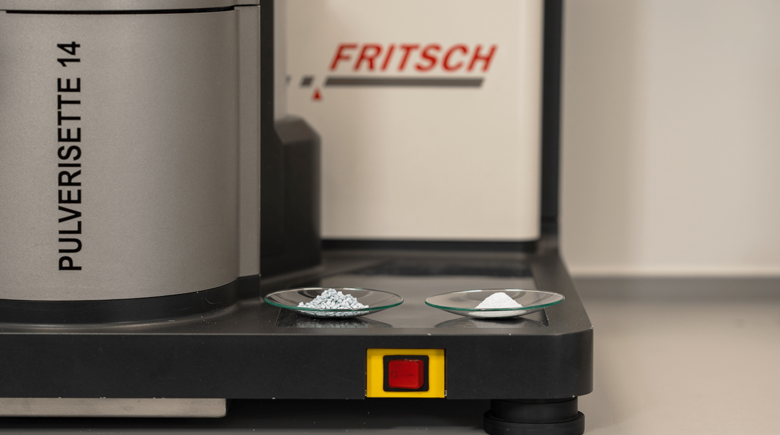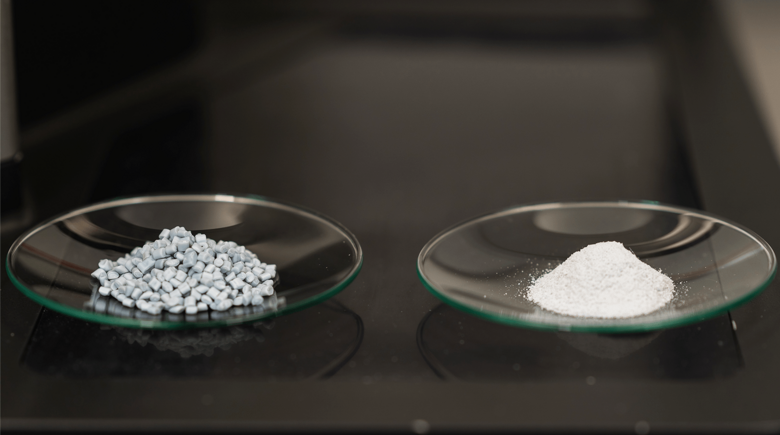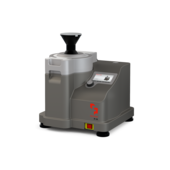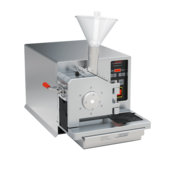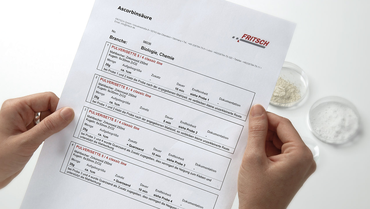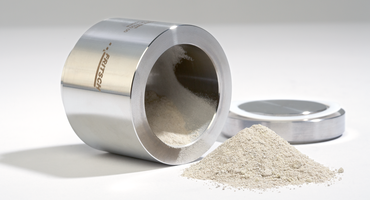Back to overview
The importance of milling for 3D printing
When it comes to 3D printing, the principle from the large to the small is reversed. In previous, well-known manufacturing processes, a component is created by removing material, for example by means of CNC turning or milling. In additive manufacturing, the approach is virtually reversed. Here, the part previously designed in CAD is created from a powder or a liquid by means of a 3D printing process. Besides metals, plastics, synthetic resins, glass or paper, foodstuffs such as sugar also serve as starting materials. Consequently, these must first be processed into powder or a liquid in order to be further processed by means of 3D printing. This is where FRITSCH comes into play with its expertise in the comminution of materials that has grown over decades.
Relationship between particle size and energy input
For printing processes that prefer injection through extruded pellets, parameters such as particle size are of enormous importance. The smaller the initial size of the reactants, the less energy is required for the melting and thus printing process. It is therefore advantageous to use the finest possible starting material before the actual printing process. For this reason, the variable speed rotor mill PULVERISETTE 14 premium line, for example, is used to grind plastics, synthetic resins, papers or sugar. FRITSCH planetary ball mills are ideal for metals for 3D printing down to the nano range. The powder is then used by one of our customers, for example on the ISS for a metal printing process, in order to receive spare parts not only with the next supply rocket. The use of the powders pre-ground on Earth saves valuable energy on the ISS for the printing process.
Development of material alloys for 3D printing
In research and development, there is currently a lot of experimentation on new materials, which we notice, among other things, from the enquiries in our FRITSCH application laboratory. In particular, the use of alloys is now being looked at more closely. Here, mechanochemical alloying is realised with special parameters in a planetary ball mill. Here, the primary goal of the application is not comminution, but rather the joining or production of sophisticated metal compounds. Intensive and long-term sample stress creates extremely homogeneous materials at the atomic level, such as amorphous nickel-niobate compounds.
Recycling 3D printing waste
Irregular and already processed plastic scraps are in critical focus when it comes to the environmental issues of the 3D printing process. However, since many plastics retain their properties after several phase transformations, the idea of reusing these scraps is obvious. The universal cutting mill PULVERISETTE 19 is particularly suitable for this task of recycling 3D printing waste due to its adjustable speed. A large hopper of the large version even allows the production of a granulate from sample pieces up to 12cm.
This topic deserves deeper consideration
The particle size is one of the decisive parameters for 3D printing. If this initial shape can be realised independently through optimised processes, not only profound insights are offered, but also supplier independence and competitive advantage. In the second part of this series on particle size and 3D printing, "Reduced Particle Size Saves Energy in 3D Printing", you will learn in more detail how energy is saved in 3D printing through size reduction, which ultimately increases effectiveness!
-
Download the FRITSCH-report as PDF file
-
Detailed grinding reports
Back to overview

